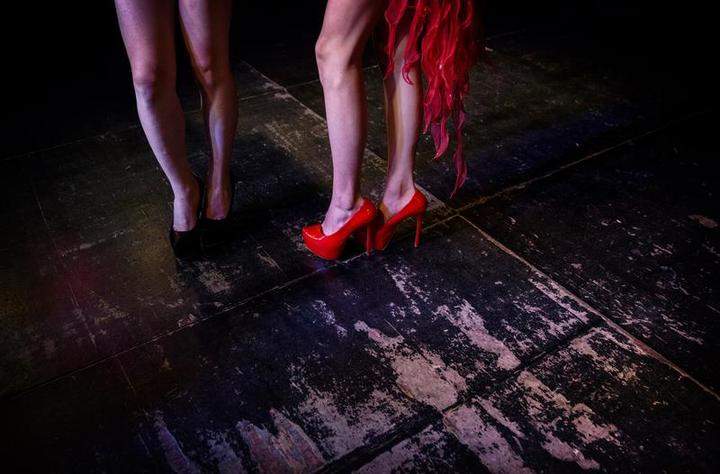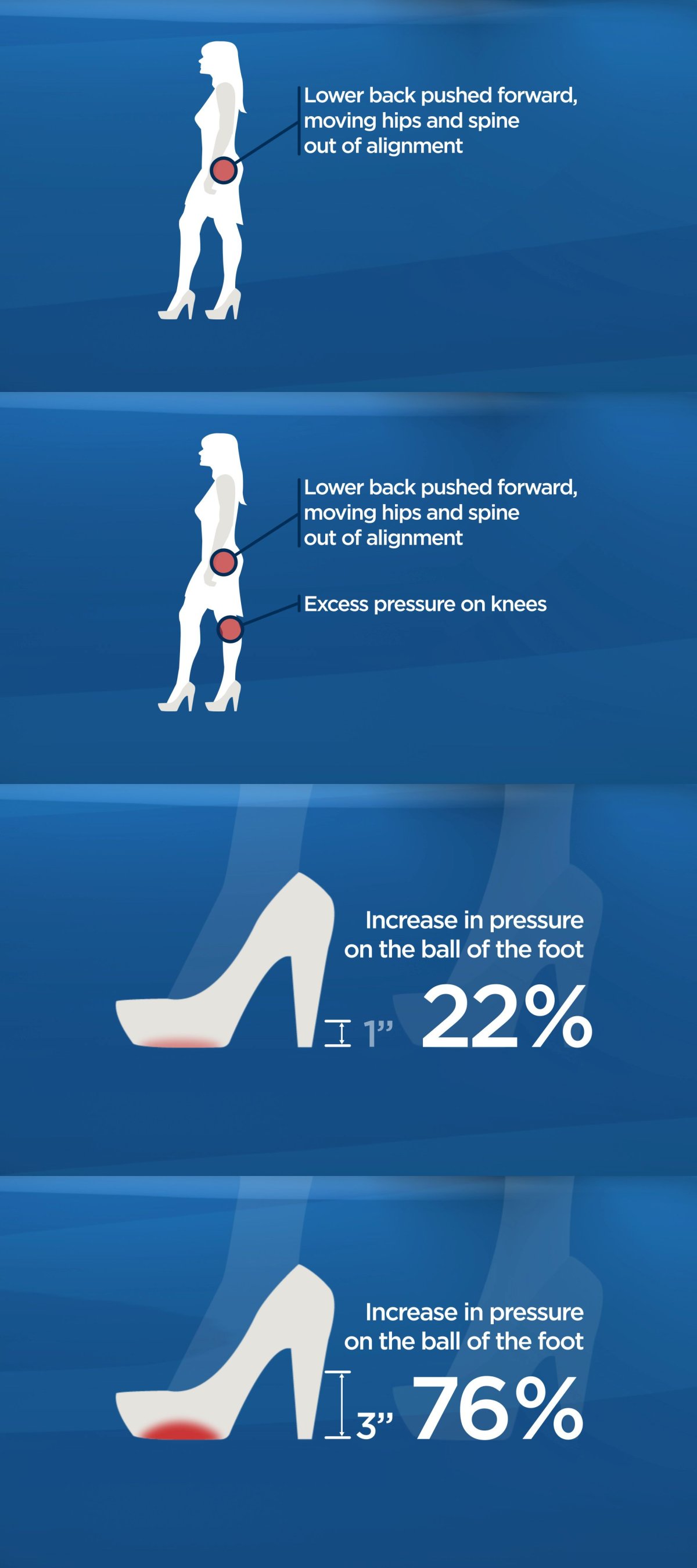CALGARY – Servers from Canadian chain restaurants continue to contact Global News claiming they were forced to wear high heels at work, as the eateries either refute the claims or pledge to investigate.

READ MORE: Original Joe’s, Boston Pizza servers claim mandatory high heel policies
It’s an issue University of Alberta alumnus Brittany Gora studied back in 2012, in a research project that surveyed 35 Edmonton servers, spanning about five restaurants. The women ranged from age 19 to 37, with an average age of 24 years.
Gora, herself a server, said she didn’t start the study because she was angry or upset—she just thought for servers to wear high heels in restaurants was a “potential hazard.”
“I didn’t necessarily think, ‘This is against my rights…It was just a thing I went along with,” Gora told Global News.
“I don’t think the girls really thought they might be able to question that at all.”
The question has gained international attention, and is currently being raised by a group of female workers in Israel. El Al airlines has a new dress code whereby all female flight attendants have to wear high heels until passengers are boarded and seated.
Under an old policy, El Al female flight attendants were required to wear high heels at the airport, but could change into flats on the plane before passenger boarding. Now El Al wants them to stay in high heels throughout the boarding process.
WATCH: High heel story garners huge social media reaction from Global News viewers
El Al says the directive to wear “presentable shoes” is standard in aviation worldwide, but the workers union of El Al instructed its female flight attendants Tuesday to ignore the new directive.
The union said the airline’s stance was “aggressive” and that the policy would impact the flight attendants’ safety and health. Female Israeli lawmakers and a women’s group have called on El Al to dump the policy.
Back in Alberta, Gora says she’s read the account of a woman who says her doctor’s note was denied when she tried to get out of wearing high heels for her shift.
“It’s crazy they have these requirements you have to wear this footwear, yet they haven’t changed anything within the workplace to accommodate that or give suggestions of what heels could be safe to work in that type of environment,” she said.
READ MORE: Original Joe’s server claims doctor note denied over high heels policy
Her study showed 100 per cent of the 35 Edmonton servers said they’d previously slipped, tripped, and/or fallen at the workplace—at an average rate of 1.6 times per week. Forty per cent said they’d sustained an injury because of such a fall, and out of those who sustained an injury, 93 per cent of them were wearing high heels.
Though the small sample size of 35 in the study is one limitation to consider, it found the majority of participants (74 per cent) felt there’s an increased risk to wearing heels at work. Other results included:
- 91 per cent affirmed that increased slipping was a risk;
- 77 per cent stated foot cramping;
- 71 per cent stated foot and ankle sprains;
- 69 per cent affirmed foot stiffness;
- 17 per cent replied sore feet;
- 11 per cent stated knee and back pain;
- 11 per cent stated blisters and bunions were a risk.
Gora’s study refers to both Work Safe Alberta and the Canadian Centre for Occupational Health and Safety, which both state employers need to understand why slips, trips and falls happen and design appropriate workspaces for employees, including footwear. One of the responsibilities under the Occupational Health and Safety Act is for employers to do “everything in their power” to ensure workers are in a healthy and safe working environment.
- McLean accuses Calgary third-party advertiser of ‘whipping votes’ in favour of rezoning bylaw
- Canadian curler Chelsea Carey says don’t compare me to Jennifer Jones
- Firefighters battle blaze at vacant house in northwest Calgary
- 7 sent to hospital after carbon monoxide poisoning incident in northwest Calgary
“The majority was men that were the managers of the restaurants, so they don’t know what it’s like to wear heel,” said Gora. “It’s funny that that was a requirement, yet they didn’t know how dangerous it could be.”
The study results found 80 per cent of participants said according to their employee handbook, it was required to wear heeled footwear as part of their dress code, “although none of the participants were supplied with appropriate footwear that ensured a reduced risk of injury for employees.”
With files from The Associated Press




Comments